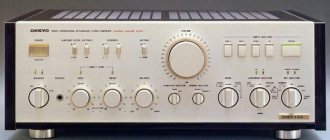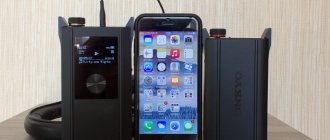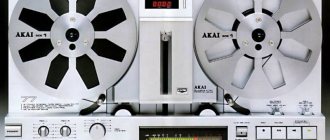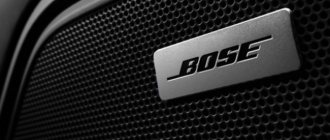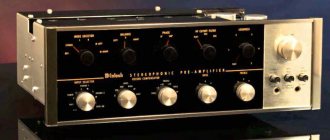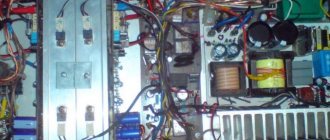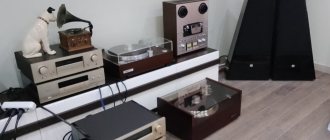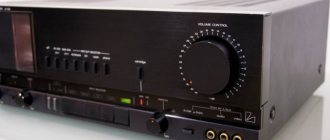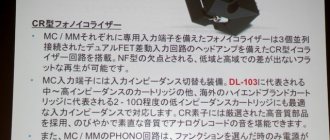GRANDIOUS INTEGRATION
Integration is the process of combining elements into a single whole. But it is unlikely that Onkyo marketers, when coming up with a name for the line of their top components, were guided by such a straightforward decoding. Surely something like: “...the most advanced engineering developments are integrated into these devices...” or “... the components of this (“Integra”) line will ideally fit into your system and turn it into a single whole...”. Of course, these are all just my conjectures and in presenting this version, as they say, “out of the blue,” I am not even trying to find confirmation or refutation of it. I have always been interested in testing my own intuition and logic. And if anyone reading this article knows how things really were, please share this knowledge in the comments to the material. For now, I'll move on to the main topic.
I’m embarrassed to admit, but at fifty-two, I’m practically unfamiliar with products released by Onkyo. I met here and there with CD players, and with amplifiers, and with receivers from this company, but somewhere - this was not at home at all, and therefore it was absolutely impossible to evaluate the devices in terms of how they ultimately sound possible. The only exception is three pairs of small Onkyo bookshelf speakers that recently visited my system. But this is not at all the product by which one can judge the manufacturer. It is necessary to evaluate the technical potential of a particular brand based on the top lines of components, so my acquaintance with the Onkyo amplifier begins with the very best…model among the company’s integrated amplifiers released in the 20th century. By “the very best” we mean the Onkyo Integra A-2001 - the most expensive (of the integrals) 280,000 yen in 1988), the heaviest (32 kg) and probably the most powerful. And besides, the only Onkyo integrated circuit with a DAC on board (among models from the last century). Of course, before our live acquaintance, I read various comments about the sound character of Onkyo amplifiers. And often their essence boiled down to the following: with a very high resolution, the sound is somewhat “synthetic”, not conducive to long-term comfortable listening. And some deficiency of the bass component. If my test confirms such observations, then interest in further acquaintance with Onkyo amplifiers will fade away before it even has time to flare up properly. Well, if everything turns out to be wrong, or not quite so, then... options are possible.
Well, here's the first visual contact. Yes, the Integra A-2001 is huge and, if it were silver, it would look even more impressive, but black is slimming and, therefore, the dimensions can only be assessed in comparison with something else, which is called contrast. True, there are many large amplifiers: Denon PMA-970 or Yamaha - A2000/A2000A with dimensions not inferior to Onkyo, but weighing 32 kg. and more can only boast of three or four ultra-top Sansui and one or two more models, amplifiers of the same exorbitant quality and price, from Denon (PMA-S10II), Victor (AX-900) and several other Japanese companies. True, size (and weight) do not always matter. At least in relation to radio electronics. Not always... But often. By the way, Onkio has six (!) support legs (four at the edges and a pair in the central part), which, given the considerable weight of the amplifier, is not at all superfluous. A similar solution is found in several other Onkyo amplifiers from the top line. Now for the functionality. I’ve already mentioned the DAC, I’ll just add the sampling frequency of 32/44.1/48 and it’s clear that there can be no talk of any high-res - only the good old CD format + DAT/Mini-disc. There is no doubt that in this way you can really improve sound reproduction using inexpensive sources (media player or CD/DVD players, etc.). Another question: how effectively does it work in this particular implementation? I think that after some time I will be able to answer this question, but for now let’s move on to equipping the amplifier. The MM/MS phono preamplifier is still the de facto standard in 1988. We will also appreciate his level. Well, that’s all. Tone block, switchable “direct” mode, headphone output – everything was like all the top amplifiers of that time. This is perhaps a more developed switching system.... In addition to analog sources and, accordingly, their switching in various variations for recording or playback, the amplifier implements similar switching for purely digital sources: in addition to the fact that all of them (if connected via optical or coaxial) are switched for playback, from each digital input you can output a digital signal for recording (DAT, Mini - Disc and, I think, a modern digital recorder can also be connected, but there is really nothing to test this in practice at the moment). Meanwhile, I press the “Power” key
It took me exactly thirty seconds to understand all the strengths of this amplifier. Indeed, the resolution is very high, almost at the limit of auditory perception. But in addition to the resolution, there is a fantastic three-dimensional scene (in this parameter, Onkyo surpasses all integrated amplifiers that I tested). And the scale - it seems that it is limited only by the walls of the room. Not a shadow of regret that the amplifier does not have a balanced connection. It would clearly be redundant. I don’t think I need to talk about the crazy dynamics. Now the bass. There is no shortage of it - where needed it is deep like thunder and fast, biting like a lash. And where it’s not there, it’s just not on the recording – neither the amplifier nor the acoustics have anything to do with it. Then why are there such reviews that sometimes occur? I think everything is simple: no one has canceled the problem of combining components, and in this segment this issue must be approached with full responsibility: either select acoustics for the amplifier, or amplifier for the acoustics. In practice, what most often happens is different: a person already has one thing and, having brought something else, is sometimes faced with the fact that close relationships between the components do not work out, just as they do not work out between a man and a woman or between people in general. However, we should not forget one point: Yes, the equipment is an inanimate object, from the point of view of an atheist, but after all, all this was made by human hands, and sometimes with soul. So why not assume that parts of this soul are reincarnated in the fruits of our creativity. Undoubtedly, this is esoteric, but it is still not worth completely denying something that cannot be explained from a scientific point of view. Now about the “synthetic” sound, which some people also spoke about. Everything is the same: with bright acoustics it is quite possible and by choosing speakers with a slightly “darker” sound the problem can be completely solved. Or, as a possible alternative, play with the wires. And not only with acoustic ones, but also with interconnects. But this is only if you don’t want to change the acoustics. For me, in the first two days of listening, nothing bothers me so far, and although my Sansui SP-G300 sound is more “light” than “dark” in nature, there is no hint of fatigue from listening. Although, eight months ago, when testing the Yamaha A-2000A with the same acoustics, I got tired after an hour. True, the Sansuevs have attenuators on the front panel and with their help you can “mute” the high-frequency range, but neither then nor now have I resorted to their help. While I was writing these lines, Andrei arrived from. And not empty-handed - he brought acoustics of his own production on Visatone broadband speakers. The model is called "Fullrange". Structurally, these are large bookshelf speakers, acoustic design: bass reflex. Sensitivity 92dB, resistance 8ohm. Actually, I planned to listen to them with a tube amplifier and will do so a little later. But since in this case the system has Integra, I’ll try to listen to at least jazz and vocals with it. Everything is as expected: vocals, piano, chamber jazz sound warm and very comfortable - when listening blindly, you can assume that a lamp is playing. In any case, before the entry of the double bass - here it is difficult to confuse the tube presentation with the transistor one. However, this was just an experiment. No one will seriously use such speakers with a transistor amplifier. Up to this point, I was listening to music material from the hard drive of the Dune HD DUO media player connected to the amplifier via the DAC of the Pioneer DV-AX10 universal player. I have already said that such a combination sounds more than convincing, while the media player itself, without an external DAC, sounds quite simple. While listening to AcousticLab speakers, I smoothly switched from digital to vinyl. But it is difficult to evaluate the merits of a phono preamplifier on wideband acoustics. I end up switching back to Sansui. Vinyl player Denon DP75M MC cartridge Audiotechnika AT-33E, MC transformer Fidelity Research FRT-3G. The first time I connected it was through a transformer. It is unlikely that the MC section of the corrector built into the amplifier will be better than an external transformer, so I probably won’t check this point.
“...Well, what can I tell you about Sakhalin?...” Every time I hope for a miracle and, every time, it doesn’t happen. Either transistor correctors really are not able to outperform similar ones implemented on tubes, or I have not yet reached the level of such correctors that are capable of this. But the bottom line is this: the 2001 phono stage is not bad, but nothing more. It is better than the corrector of the 970th Denon or zero of the seventh Pioneer, slightly worse than the correctors of the 555th (mosfet) Sony or Sansui AU-D907 F extra and is approximately comparable in level to the correctors in the Yamaha C4 & Technics SU-A6mk2 preamplifiers - sibilants on edge (but not beyond it), there is a little more air than necessary, but, strangely enough, there is no highest resolution, similar to that which the amplifier produces from a digital source. The resolution is quite average. And I would agree that this is due to the imperfection of the medium, but with a tube phono preamplifier everything is drawn noticeably more delicately. My final rating is “4”. Considering that practically no transistor phono preamplifier has ever received an “A” from me... (although Sony could well have grabbed this very highest rating, but at the time when I tested Sony, I was only singing its praises without evaluating it in digital equivalent, but Now it wouldn’t hurt to refresh that sound in my memory since more than a year has passed) ... and the range of grades I give ranges from “C plus” to “Four” with a similar mathematical sign, then being a solid “good student” is already not bad.
Meanwhile, I will try to move from 1988, that is, the year of birth of the Onkyo Integra A-2001, thirty years ahead, to the year 2018 and see what the descendant of 2001 - Onkyo A- is like. 9000R. If we compare the numbers, the comparison is clearly not in favor of the modern device. All that remains of the brutal power of 2001 are comparable body sizes. The weight of the contemporary is only 18.5 kg. (vs. 32 kg.), and the output power is 2x75 W (8 ohm.) and 2x140 W. (4 ohm.), while the 2001 has 2x150 W. (8 ohm.) and 2x170 W. (6 ohm.) . But the functionality is similar. Just like the 2001, there is a DAC on board the A-9000R, but not a Burr-Brown one, but a Wolfson one. But support for high-resolution formats up to 24/192 inclusive is announced. For some this may be important, but personally I somehow got over it. Of course, pitting both of these devices against each other in the ring would probably be of interest to many, but buying the 9000 just for this is nonsense, and there’s nowhere to get it for free. So I return to the current test and bring the heavy artillery into battle: SACD discs.
The source will be the old, proven Pioneer DV-AX10, although it is possible that a Cambridge BD-650 will be connected in the process - only it is capable of reading self-written “super cards”. And I will feed the few branded ones to Pioneer - his level is noticeably higher. Very noticeable. I started with Roger Waters (Amused To Death) and already on the second track I realized: SACDs have never sounded so good to me. Even with the much more expensive Accuphase M-60 or Counterpoint SA20, everything was very decent, but much less impressive. The last time I listened to such “surround sound” was on a multi-channel (5.1) system and it was Jean Michel Jarre (album “Aero” 2004. DTS 5.1 track) But there were five speakers, plus a subwoofer, and the DTS format itself was designed for this type of delivery. And here is a classic stereo, two speakers and me... like Field Marshal Paulus in 1943 near Stalingrad. Well, okay, Waters ate a lot of stuff with special effects (I think I’ve already talked about this) and I couldn’t go on any further, but... I put on Dire Straits’ “Brothers in Arms” and already on “Money for Nothing” there’s a break in the pattern: Knopfler’s guitar soars above my head, it turns out to be on the right, then on the left, and even completely behind my back. In general, she is spinning around like a lady in a coffin, in Gogol’s “Viye” around Khoma Brut. And Mark himself, as expected, is in front, on stage, in front of the microphone. In general, he is on his own, and the guitar is on its own. And I understand with my mind that this is wrong, that it shouldn’t be this way, but it’s unusual, it’s unusual and it’s sooo cool. True, on other tracks there was no such incorrect interpretation, but the “sound around” was preserved on this album from the first track to the last. And I, in the hope of “continuing the banquet,” grabbed the album “On Every Street”, although not a SACD, but a regular CD, but I was ready to continue to enjoy myself. But...the magic is over. The CD played beautifully, effectively and... correctly, without trying to embrace the immensity. Of course, I also have SACDs and will definitely listen to them. But later.
I listened. Including “self-recorders” on the Cambridge BD-650. Everything is good, but not nearly as “tasty”
In the meantime, I'm evaluating the DAC. At first I wanted to take the Pioneer PD-S707 out of the box - it served me faithfully for several years, but the DV-AX10 forced it out of the system and put it in storage. Nevertheless, the 707 is not bad at all. It has a fairly decent DAC on board (in fact, a converted Burr-Brown PCM1716), plus a grammatical upgrade: separate trances for the digital and analog parts, Burr-Brown op-amps and audiophile capacitors in the output stage. I mainly used it as transport, but it sounds good enough on its own. So I thought: I’ll connect it analogue and digital to the Onkyo and compare which turns out to be better in sound: Pioneer’s own DAC or the Onkyo DAC. But at the last moment I decided to take the easier route and evaluate the Onkyo DAC using a media player, since all I had to do was connect the optical cable from the Pioneer DV-AX10 DAC to the Onkyo DAC. Switched it over and turned it on.
Guys, Onkio’s DAC is FIRE!!!!!! In this case, by the concept of “fire” I mean the sound “with a spark”, lively, perky, not leaving indifferent. Although the overall level of the DAC is quite high. About a year ago I tested the Yamaha CDX-2200 CD player (by the way, it also has a Burr-Brown PCM56 DAC, like Onkyo). So my “Dune” played about the same as the Yamaha - I remember that handwriting and manner of delivery very well. Very rich mids and highs and tight, brutal bass. I specifically put on a couple of tracks that blew me away during the Yamaha test: ChaiF “Leaving” and Agatha Christie’s “Helicopter Carpet”. So, on this very “Helicopter Carpet,” the pillows on the sofa began to move from the movement of air masses around the room by the speakers. At the same time, the volume on the amplifier remained at the standard “9 o’clock” (does anyone else believe that Onkyo has no bass?))). But okay, bass, everything else is also on par. At the top Hi-Fi level without any discounts. I will not argue that the Onkyo DAC has surpassed the Pioneer DAC (DV-AX10) - it is still of a higher level. Nevertheless, both are good, albeit in their own way. The Onkio DAC is more greyhound, while the Pioneer DAC is somewhat more delicate. I don’t know which chip, 56th or 1704th, is rated higher by DAC manufacturers - the final implementation is important. This one sounds better on one material, and this one on another. The main thing is that the DAC was not plugged into Onkyo for show, as is often the case in modern realities. He is a full-fledged partner, corresponding to the general level of the product. One is tempted to paraphrase the poet: Oh yes Onkio! Hey son of a bitch! Now the question arose about the advisability of connecting the 707th Pioneer to Onkyo. The result is known in advance - don’t go to a fortune teller! However, “A” said, “B” also said, and, exalting my own laziness, I took the box with “Pioneer” from the cabinet. This time, my intuition did not disappoint me – the result was exactly as expected. Perhaps a less pronounced difference. But this is understandable - the level is still closer, as I said above. Especially after the upgrade, the 707 can compete almost equally with its brothers from the “higher classes”. However, the Onkio DAC has a slightly more driving bass, a little more warmth in the vocals and a slightly more interesting depiction of the three-dimensional space called the stage and this is the same result: the class of the amplifier and the class of the DAC built into it correspond to each other and generally form the impression of Onkyo Integra A-2001 as a self-sufficient, complete product. Should a not particularly outstanding phono stage be considered a big disadvantage? This is just one question, and there are many more such questions, despite the positive mood of the material as a whole. Any good amplifier has its own character. There are devices that sound relatively neutral and are easy to recommend. The most recent example tested is the Pioneer A-07. But there are products that are very, very charismatic. I would probably classify the Onkyo Integra A-2001 as one of these. But charisma is different from charisma. Onkyo, far from being the brutal “Die Hard” Bruce Willis (we don’t evaluate his appearance), is rather Jack Sparrow from “Pirates of the Caribbean” - just as unpredictable, somewhat mannered, but that doesn’t make him any less curious. None of the amplifiers I have tested has ever evoked so many conflicting emotions. At times it seemed that Onkio’s sound was not quite “correct” and did not fit into the traditional canons, and sometimes it was the other way around. And then I had to mentally say to myself: “Calm down, Hippolyte, calm down... At our age, it is no longer possible to react so violently to external stimuli, even if they deserve it. So you need to exhale, count to one hundred and... wait for a while. And then, you see, everything will fall into place. Well, what if not? Then perhaps there really was something in it, there is and there will be something.” So my conclusions about this product are clear in only one thing: if you are looking for an amplifier and you have the opportunity to listen to this model, do not neglect this opportunity. Such an acquaintance will definitely not leave you indifferent. As for the rest... Well, you understand me.
PS Next to the “Power” key, on the front panel of the amplifier, there is a window with the inscription “Remote Sensor”, which indicates the ability to control the amplifier from the remote control. But this is in theory. In practice, there is no information about the complete remote control. Most likely he never was. Then what is the sensor for, you ask. And here is the most interesting thing. The fact is that the A-2001 amplifier was not the only device in the line. There was also a very interesting CD player S-2001 with fantastic parameters (the weight alone is worth 27 kg.!!!!) and a fantastic price (300,000 yen!!!!!). That is, more expensive than the amplifier itself. And this same player was equipped with a remote control, from which, apparently, it was possible to control the amplifier. I would really like to see this player in person. But our desires do not always coincide with our capabilities. Nevertheless, I will definitely try to find this player, although this is not an easy task. This year, only four completely destroyed copies slipped through the auction - absolutely not working, so ruined that you couldn’t even look at them without tears, and, of course, no remote control included. But let's hope. But what if?
Onkyo A-9070
qwert3733, 10/16/2012
Advantages: -Good detail -High resolution -Functional -May sworn audiophiles forgive me, after recently listening in one decent salon to various combinations (source/amplifier/acoustics) priced from 500 thousand rubles. up to 1.5 million rubles (T+A + ASW, Vincent + Dali Helicon, Bryston + Dynaudio) I didn’t notice a HUGE difference in sound with my set (see below), of course there is, it is audible, the sound is better but not 10-15 times. - The amplifier is quite good, it plays jazz, classical, soul, vocals, instrumental music well - in general, it’s worth the money, you should definitely listen to it before buying
Disadvantages: - Unique presentation of the bass register - Energetic genres lack dynamics and pressure
Comment: I purchased the device almost by accident, without prior listening. I replaced my Onkyo tx-nr 609 receiver with this amplifier in an effort to improve the playback of stereo recordings. At the time of purchase, there was no information about this product anywhere - not a single test, review, silence on the forums... In general, I decided to take a risk, ordered, received, connected and began to listen.. To begin with, the composition of my system: CD player - Yamaha CDX- 497 as transport (the amplifier has 2 Wolfson DACs of a fairly high level), connected with good Chord glass optics ($120); In addition, an interconnect from the CD player was sent to the Inakustik Premiun amplifier ($50) - for sound comparison. Acoustics Dali Ikon 5, connected via bi-wiring cable Monster ($20 per meter); Room - bedroom 14 sq. m, the equipment is opposite the bed, the walls are gypsum, the floor is laminate, the ceiling is suspended - no additional measures have been taken for acoustic treatment. After using the receiver, I immediately felt the increased detail of the sound, the instruments in the music became more distinguishable, the high-frequency range (cymbals, saxophone) was transmitted especially well. The bass has become less and its presentation itself is quite peculiar - it feels as if on the frequency response graph there is a slight rise in the region of 1-1.5 KHz (determined by a test CD from an audio store). This is especially noticeable in modern dance music and especially when the recording source is of poor quality - FM or MP3. Although I began to listen to such music less often after buying an amplifier, I was able to partially solve the problem in the following way: the functionality of the amplifier allows you to connect an equalizer to it - this was done: now when listening to electronics, the sound comes through it. On the receiver, this direction sounded, of course, more convincing and assertive, but there is an explanation for this: the Audyssey calibration system - the sound was processed by the processor and even something decent was extracted from MP3. I give the device a solid 4. It’s worth the money, I’m not disappointed with the purchase, I’m not going to sell it yet.
